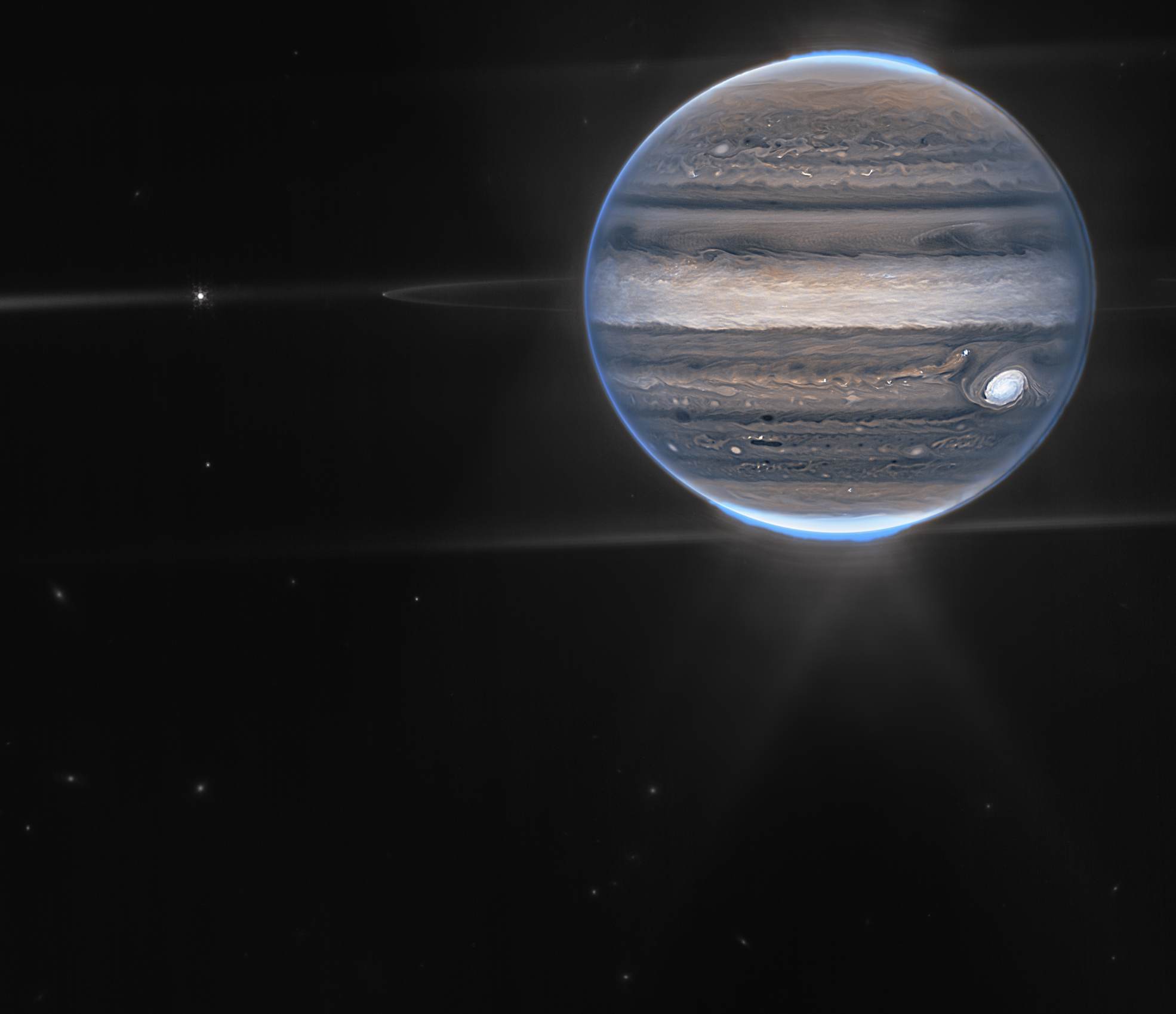The James Webb Space Telescope has captured new images of Jupiter, the fifth planet from the sun and the largest in the solar system.
Named for the king of the Roman gods, Jupiter is so large that it is twice as big as all the other solar system planets combined, and eleven Earths could fit inside it. In 1610, Galileo Galilei discovered Jupiter’s moons, the first to be found beyond Earth; the gas giant has fascinated astronomers since then.
Juno, NASA’s solar-powered spacecraft, continues to orbit the planet, sending back more information about the origin and evolution of Jupiter and solving mysteries about its storms, water sources and poles.
Known for its stripes and swirls, which are actually cold, windy clouds of gas, James Webb has revealed these familiar descriptions in even better detail, showing its rings, satellites and even auroras.
 Webb NIRCam composite image of Jupiter from three filters – F360M (red), F212N (yellow-green), and F150W2 (cyan) – and alignment due to the planet’s rotation. Credit: NASA, ESA, CSA, Jupiter ERS Team; image processing by Judy Schmidt.
Webb NIRCam composite image of Jupiter from three filters – F360M (red), F212N (yellow-green), and F150W2 (cyan) – and alignment due to the planet’s rotation. Credit: NASA, ESA, CSA, Jupiter ERS Team; image processing by Judy Schmidt.
“We hadn’t really expected it to be this good, to be honest,” planetary astronomer Imke de Pater, professor emerita of the University of California, Berkeley, told NASA.
“It’s really remarkable that we can see details on Jupiter together with its rings, tiny satellites, and even galaxies in one image,” she said.
Also visible is the famous Great Red Spot storm, which in the image is reflecting sunlight to appear white.
“The brightness here indicates high altitude – so the Great Red Spot has high-altitude hazes, as does the equatorial region.The numerous bright white ‘spots’ and ‘streaks’ are likely very high-altitude cloud tops of condensed convective storms,” said Heidi Hammel, Webb interdisciplinary scientist for solar system observations and vice president for science at AURA.
 Webb NIRCam composite image from two filters – F212N (orange) and F335M (cyan) – of Jupiter system, labeled. Credit: NASA, ESA, CSA, Jupiter ERS Team; image processing by Ricardo Hueso (UPV/EHU) and Judy Schmidt.
Webb NIRCam composite image from two filters – F212N (orange) and F335M (cyan) – of Jupiter system, labeled. Credit: NASA, ESA, CSA, Jupiter ERS Team; image processing by Ricardo Hueso (UPV/EHU) and Judy Schmidt.
Jupiter’s rings and two moons, Amalthea and Adrastea, are seen in the wide-field view image.
https://www.youtube.com/watch?v=jKgVJwwDsnU
“This one image sums up the science of our Jupiter system program, which studies the dynamics and chemistry of Jupiter itself, its rings, and its satellite system,” said Thierry Fouchet, a professor at the Paris Observatory, as part of an international collaboration for Webb’s Early Release Science program. DM/ ML
In case you missed it, also browse The James Webb telescope’s first images.
https://www.dailymaverick.co.za/article/2022-07-12-in-pictures-the-james-webb-telescopes-first-images/




 Webb NIRCam composite image from two filters – F212N (orange) and F335M (cyan) – of Jupiter system, labeled. Credit: NASA, ESA, CSA, Jupiter ERS Team; image processing by Ricardo Hueso (UPV/EHU) and Judy Schmidt.
Webb NIRCam composite image from two filters – F212N (orange) and F335M (cyan) – of Jupiter system, labeled. Credit: NASA, ESA, CSA, Jupiter ERS Team; image processing by Ricardo Hueso (UPV/EHU) and Judy Schmidt. 